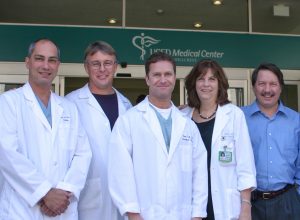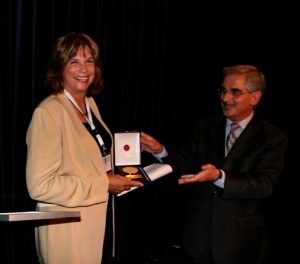Anne Roberts Steps Down as AED with Multiple Accomplishments
by James Spies, MD, MPH, Associate Executive Director for Interventional Radiology
2020;13(4)6
After four years serving as the inaugural ABR associate executive director for interventional radiology (AED IR), Anne Roberts, MD, has stepped down to focus on her academic practice at the University of California San Diego (UCSD). She will be sorely missed by staff and IR candidates and diplomates who have benefited from her support during her tenure.

Trained in radiology and IR at Massachusetts General Hospital, Anne joined the UCSD faculty in 1987. She quickly established herself as an accomplished interventionalist and clinical researcher. She has had a prolific research career, publishing more than 100 original scientific papers and innumerable scientific abstracts, chapters, and reviews. She also has been a much sought after speaker, with more than 600 invited presentations and dozens of invited named lectures and visiting professorships. Based on her outstanding academic achievements, she was promoted to full professor in 1998 – just 10 years into her academic career.

Anne has provided exceptional service to interventional radiology, having served in leadership roles in every major radiology organization affecting the field. She was president of the Society of Interventional Radiology in 1998 (one of its youngest presidents ever), president of the Western Angiography Society, member of the Council on Cardiovascular Radiology of the AHA, Chair of the Interventional and Vascular Subcommittee of the Scientific Committee of the RSNA, and Chair of the Interventional Council of the Board of Chancellors of the ACR. She has served on innumerable committees within these organizations and others, all with a focus on advancing the field of interventional radiology and the care of IR patients.

Within the ABR, Anne has had many roles. She has been an oral board examiner since 1994, was a trustee for 8 years, and has served on many task forces and committees addressing a range of needs and initiatives. She was one of the key leaders who advanced the ABR’s efforts to establish IR as a distinct medical specialty. In her most recent role, she has helped form the policies to implement the new IR/DR board certification process, an important step in distinguishing interventional radiology from diagnostic radiology. She has worked tirelessly in refining the pathways to address candidates’ needs and concerns. She was instrumental in creating the IR Transition pathway, which allowed a path to IR /DR certification for those who were more than 10 years beyond training and no longer eligible. This path has allowed the certification of a whole group of interventional radiologists who have been working in the field without the benefit of full IR certification.
The AED is the primary contact for candidates and diplomates within the discipline for questions about eligibility and certification. Anne has fielded all these inquiries with good grace and thoughtful individual attention. Because of her efforts, she is leaving the ABR and the IR/DR certification process in a much better place than it was four years ago. Hers are big shoes to fill for the next AED.


